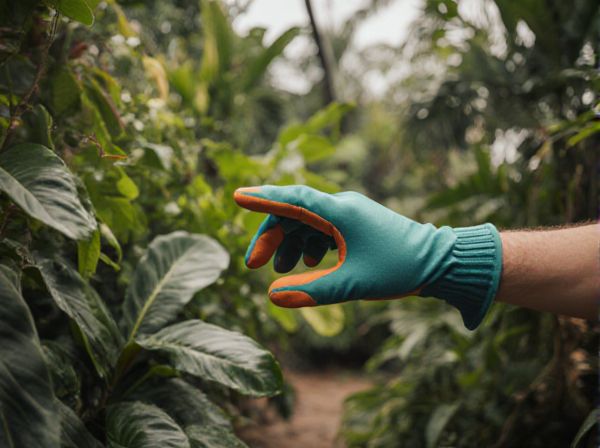
Tropical Display vs Alpine Rockery Illustration
Tropical displays showcase lush, vibrant plants with broad leaves and bright blooms that evoke a warm, exotic ambiance ideal for creating dramatic focal points. Alpine rockeries feature hardy, low-growing plants adapted to rocky, well-drained soils, offering delicate textures and subtle colors that blend seamlessly with natural stone arrangements. Choosing between a tropical display and an alpine rockery depends on climate, space, and the desired visual impact in ornamental gardening.
Table of Comparison
| Feature | Tropical Display | Alpine Rockery |
|---|---|---|
| Climate | Warm, humid, frost-free | Cool, dry, frost-tolerant |
| Plant Types | Broadleaf evergreens, large-leafed plants | Low-growing succulents, cushion plants |
| Soil Requirement | Rich, well-drained, moisture-retentive | Gravelly, well-drained, acidic or alkaline |
| Design Style | Lush, dense foliage, vibrant colors | Minimalist, natural rock formations |
| Maintenance | Regular watering and feeding | Low water, minimal feeding |
| Typical Plants | Bird of paradise, hibiscus, palms | Alpines, saxifrages, sedums |
Introduction to Ornamental Gardening: Tropical Display vs Alpine Rockery
Tropical displays in ornamental gardening emphasize lush, vibrant foliage and exotic, moisture-loving plants such as hibiscus, bird of paradise, and palms, creating a dramatic, colorful landscape. Alpine rockeries utilize drought-tolerant, compact species like sedum, saxifrage, and alpines that thrive in rocky, well-drained soils, highlighting texture and form. Each style caters to different climatic conditions and aesthetic goals, offering unique sensory and ecological experiences in garden design.
Key Characteristics of Tropical Displays
Tropical displays feature lush, large-leaved plants such as palms, bird of paradise, and hibiscus, thriving in warm, humid environments with rich, moisture-retentive soil. These displays emphasize vibrant colors and bold textures, creating a dense, exotic atmosphere that contrasts with the minimalist, drought-resistant plants of alpine rockeries. High humidity and consistent watering are essential, supporting the growth of tropical foliage that demands more intensive care than the hardy, well-drained settings preferred by alpine species.
Defining Features of Alpine Rockeries
Alpine rockeries are characterized by their use of rugged, natural stones arranged to emulate mountainous terrain, creating an authentic habitat for alpine plants like saxifrage and edelweiss. These rockeries emphasize drainage and mineral-rich soil conditions, supporting hardy, low-growing species adapted to cold, high-altitude environments. In contrast to tropical displays, alpine rockeries prioritize drought-resistant plants and minimal moisture retention, reflecting the unique ecology of alpine landscapes.
Climate and Location Considerations
Tropical displays thrive in warm, humid climates with consistent moisture and indirect sunlight, making them ideal for sheltered garden corners or greenhouse settings. Alpine rockeries require well-drained, rocky soils and cooler, drier conditions often found in mountainous or elevated garden areas with full sun exposure. Selecting plants suited to the specific climate and micro-location ensures vibrant growth and long-lasting ornamental appeal.
Plant Selection: Tropical vs Alpine Varieties
Tropical displays feature vibrant, broad-leaved plants such as hibiscus, bird of paradise, and bromeliads that thrive in warm, humid environments, emphasizing lush foliage and vivid colors. Alpine rockeries prioritize hardy, compact plants like saxifrage, edelweiss, and alpine asters, adapted to cold, well-drained, and rocky conditions with slow growth and drought resistance. The choice between tropical and alpine plant selection directly influences garden aesthetics, microclimate requirements, and maintenance strategies.
Design Principles for Each Style
Tropical display design principles emphasize lush, vibrant foliage, bold colors, and layered planting to create a dense, exotic ambiance with high humidity and rich soil conditions. Alpine rockery prioritizes well-drained, gritty substrate, sparse yet textured plant arrangements, and the use of rocks to mimic mountainous environments, highlighting resilience and minimalism. Each style requires specific plant choices and structural elements tailored to their native habitats to achieve authentic visual and ecological harmony.
Maintenance Requirements Compared
Tropical displays demand regular watering, high humidity, and protection from cold temperatures to maintain vibrant foliage and flowering plants. Alpine rockeries, on the other hand, require minimal maintenance with well-drained soil, less frequent watering, and excellent airflow to support hardy, low-growing plants adapted to cooler climates. Both garden styles necessitate tailored care regimes that align with their distinct environmental needs and plant species.
Common Challenges and Solutions
Tropical displays often face challenges with high humidity and pests, requiring well-draining soil and regular monitoring to prevent fungal infections. Alpine rockeries struggle with poor soil fertility and extreme temperature fluctuations, necessitating the use of gritty, nutrient-rich substrates and strategic placement for optimal sunlight exposure. Both settings benefit from selecting plant species adapted to specific microclimates to enhance resilience and aesthetic appeal.
Visual Impact and Aesthetic Appeal
Tropical displays captivate with vibrant, lush foliage and bold, colorful blooms that create a dramatic visual impact in garden spaces. Alpine rockeries emphasize delicate, low-growing plants with intricate textures and subtle hues, offering a refined aesthetic that complements rocky landscapes. The choice between tropical displays and alpine rockeries significantly influences garden atmosphere, ranging from dynamic vibrancy to serene elegance.
Choosing the Right Style for Your Garden
Selecting the right garden style depends on climate and aesthetic preferences, with tropical displays featuring lush, vibrant plants like bird of paradise and hibiscus thriving in warm, humid environments. Alpine rockeries incorporate hardy, drought-resistant plants such as sedum and saxifrage, ideal for cooler, mountainous regions with well-drained soil. Understanding your garden's environmental conditions helps determine whether a tropical display's bold foliage or an alpine rockery's rugged texture best complements your outdoor space.
Tropical Display vs Alpine Rockery Infographic

 gardendif.com
gardendif.com